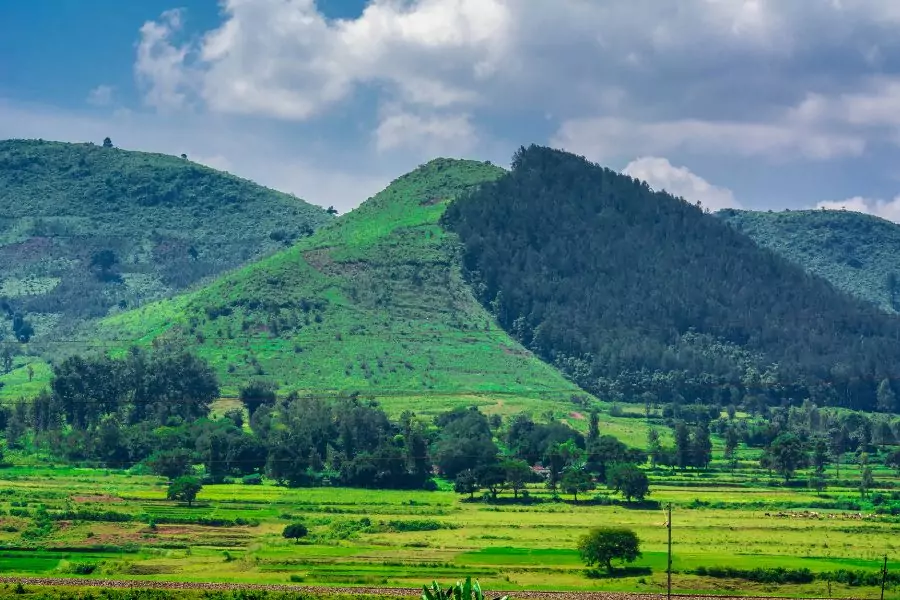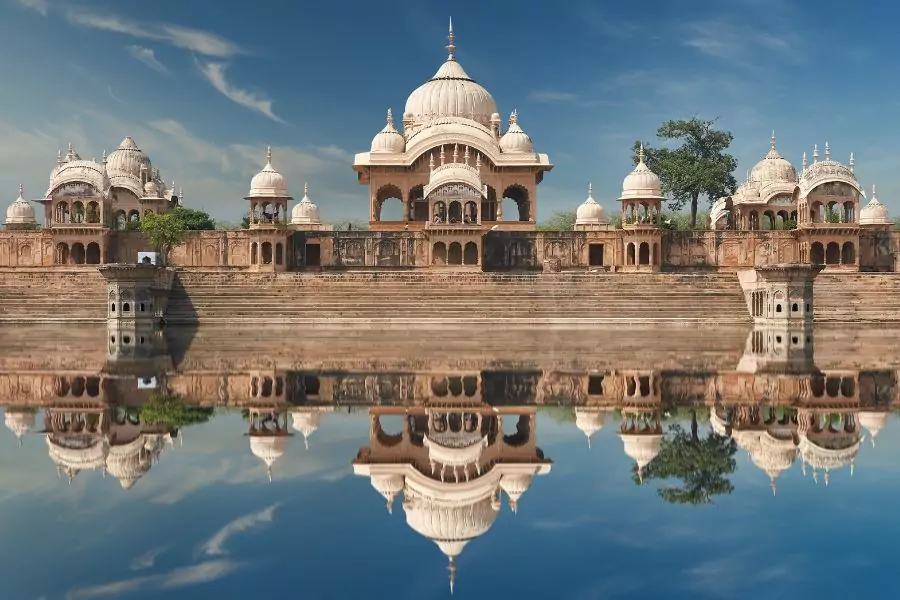Namdapha National Park – Entry Fees & Permits, Trekking,

Nestled in the eastern Himalayan foothills of Arunachal Pradesh, Namdapha National Park is a spectacular wilderness offering unparalleled biodiversity. Spanning over 1,985 square kilometers, this is the third-largest national park in India and one of the richest ecosystems in the country. Known for its lush forests, towering mountains, and exotic wildlife, Namdapha is a must-visit destination for nature lovers and adventure seekers alike.
Let’s dive into the wonders of Namdapha National Park and explore what makes it such a special place.
1. Overview of Namdapha National Park

Namdapha National Park is located in the Changlang district of Arunachal Pradesh and is part of the Eastern Himalayas biodiversity hotspot. The park’s altitude ranges from 200 meters to over 4,500 meters, creating a diverse range of habitats that support an extraordinary variety of plant and animal life.
Key Highlights:
- Established in 1983
- Part of the Indo-Burma biodiversity hotspot
- UNESCO World Heritage Site nominee
2. The Rich Biodiversity of Namdapha
Namdapha is one of the few places in the world where you can find four big cat species—tigers, leopards, snow leopards, and clouded leopards—all within the same park. The park is also home to numerous other animals, including red pandas, elephants, Himalayan black bears, and several species of primates.
Wildlife Spotting Opportunities:
- Over 1,000 species of flora
- More than 500 species of birds, including hornbills and Himalayan monals
- Rare and endangered animals like the Hoolock Gibbon and the Asiatic Black Bear
3. Flora of Namdapha National Park
The diverse topography and climate of Namdapha result in a wide variety of vegetation, ranging from tropical rainforests to temperate forests and alpine meadows. The park’s rich flora supports a thriving ecosystem that sustains its abundant wildlife.
Notable Plant Species:
- Orchids and rhododendrons
- Bamboo groves and dense canopies
- Medicinal plants and rare ferns
4. Trekking and Adventure Activities

Namdapha is a paradise for trekkers and adventure enthusiasts. The park offers several trekking routes that allow visitors to explore its dense forests, rivers, and remote valleys. Treks range from easy walks to more challenging routes, catering to both beginners and seasoned adventurers.
Popular Trekking Routes:
- Deban to Hornbill Camp Trek
- Deban to Firmbase Trek
- Dapha Bum Trek
5. Birdwatching at Namdapha

Birdwatchers will be delighted by the rich avian diversity in Namdapha National Park. The park is home to rare and endemic bird species, making it a prime destination for birding enthusiasts from around the world.
Top Birds to Spot:
- White-winged Wood Duck
- Rufous-necked Hornbill
- Wreathed Hornbill
- Blue-naped Pitta
6. Best Time to Visit Namdapha
The best time to visit Namdapha National Park is during the winter months, from November to March, when the weather is cool and dry. During this period, the park is most accessible, and wildlife sightings are frequent.
Seasonal Overview:
- Winter (November to March): Best time for trekking and wildlife spotting
- Summer (April to June): Warm temperatures but still good for birdwatching
- Monsoon (July to October): Heavy rainfall, making trekking and travel difficult
7. How to Reach Namdapha National Park
Namdapha National Park is remote, but it is accessible through various modes of transportation. The nearest town to the park is Miao, located around 25 kilometers from the park’s entrance.
By Air: The nearest airport is Dibrugarh Airport, located around 182 km away. From the airport, hire a taxi or take a bus to the park.
By Rail: The nearest railway station is Tinsukia Railway Station, about 141 km from the park. You can take a taxi or local transport to reach the park.
By Road: The park is well-connected by roads. You can take a bus or drive from major cities like Dibrugarh, Tinsukia, or Tezu to Miao, the closest town to Namdapha, and then continue by road to the park.
8. Namdapha National Park Entry Fees and Permits
Since Namdapha is located in a restricted area, visitors are required to obtain special permits to enter the park. These permits can be obtained from the forest department at Miao.
Entry Fees:
- Indian Nationals: INR 100 per person
- Foreign Nationals: INR 500 per person
- Additional charges for cameras and guides
9. Camping and Accommodation in Namdapha
There are no luxury resorts inside the park, but several options for camping and eco-friendly lodges are available around the periphery. The Forest Rest Houses at Deban and other locations offer basic accommodation for visitors.
Recommended Stays:
- Deban Forest Lodge
- Miao Guest Houses
- Tented Camps at Hornbill Camp
10. Exploring Miao Town

While Namdapha is the main attraction, the nearby town of Miao offers its own charm. Visitors can explore the local Buddhist monastery, the Indo-Burma petroleum project, and the nearby Tibetan refugee settlement.
Things to Do in Miao:
- Visit the Tibetan Refugee Center
- Explore the local markets for handicrafts
- Discover the rich Buddhist culture at Miao Monastery
11. Indigenous Tribes and Culture
Namdapha is not only a haven for wildlife but also for indigenous tribes like the Lisu and Singpho communities. These tribes have lived in harmony with nature for centuries and provide visitors with an insight into their unique way of life.
Cultural Experiences:
- Learn about traditional farming and hunting methods
- Participate in local festivals and rituals
- Visit tribal villages around the park
12. Conservation Efforts in Namdapha
Namdapha National Park faces various challenges, including deforestation and poaching. However, conservation efforts led by the Indian government and various NGOs have helped protect its unique biodiversity.
Ongoing Conservation Projects:
- Anti-poaching patrols
- Reforestation programs
- Community involvement in conservation
13. Photography Opportunities
From majestic mountains to vibrant wildlife, Namdapha offers countless photography opportunities. Whether you’re a professional or an amateur, you’ll find plenty to capture with your camera.
Best Spots for Photography:
- Noa Dihing River banks
- Dense forest trails
- Elevated viewpoints offering panoramic views
14. Wildlife Safaris and River Cruises
While traditional jeep safaris are not the main mode of exploration in Namdapha, wildlife enthusiasts can enjoy river cruises along the Noa Dihing River to spot animals and birds along the riverbanks.
What to Expect:
- Unique boat safaris through dense forests
- Spotting river dolphins, elephants, and more
- Relaxing and scenic river journeys
15. Sustainable Tourism Practices
Given the fragile ecosystem of Namdapha, sustainable tourism is key to preserving its natural beauty. Visitors are encouraged to follow eco-friendly practices such as minimizing waste, respecting local cultures, and supporting community-based tourism initiatives.
Eco-Friendly Tips:
- Carry reusable water bottles and avoid plastic
- Stick to designated trails during treks
- Support local businesses and guides
Conclusion
Namdapha National Park is a jewel of Northeast India, offering an incredible range of experiences for nature lovers, adventurers, and wildlife enthusiasts. Whether you’re trekking through its lush forests, spotting rare animals, or immersing yourself in local cultures, Namdapha promises a journey that will leave you in awe of the natural world. So pack your bags, grab your binoculars, and get ready for an adventure like no other!
FAQs
1. Is Namdapha National Park open throughout the year?
No, the park is best visited from November to March due to favorable weather conditions. The monsoon season makes access difficult.
2. Are there any guided tours available inside the park?
Yes, guided trekking and birdwatching tours are available, usually organized by local tour operators or the forest department.
3. What kind of wildlife can I expect to see in Namdapha?
You can spot tigers, leopards, snow leopards, clouded leopards, red pandas, elephants, and a wide variety of bird species.
4. What are the accommodation options near Namdapha National Park?
There are basic accommodation options like forest lodges and guest houses, as well as camping facilities.
5. Do I need a special permit to visit Namdapha National Park?
Yes, both Indian and foreign tourists need permits to enter the park. These can be obtained at the forest department office in Miao.


